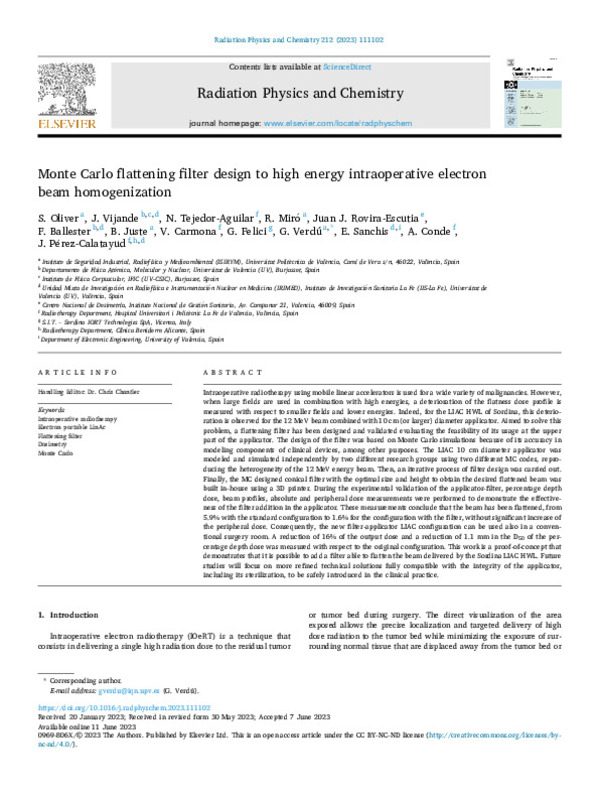JavaScript is disabled for your browser. Some features of this site may not work without it.
Buscar en RiuNet
Listar
Mi cuenta
Estadísticas
Ayuda RiuNet
Admin. UPV
Monte Carlo flattening filter design to high energy intraoperative electron beam homogenization
Mostrar el registro completo del ítem
Oliver-Gil, S.; Vijande, J.; Tejedor-Aguilar, N.; Miró Herrero, R.; Rovira-Escutia, JJ.; Ballester, F.; Juste-Vidal, B.... (2023). Monte Carlo flattening filter design to high energy intraoperative electron beam homogenization. Radiation Physics and Chemistry. 212. https://doi.org/10.1016/j.radphyschem.2023.111102
Por favor, use este identificador para citar o enlazar este ítem: http://hdl.handle.net/10251/201417
Ficheros en el ítem
Metadatos del ítem
| Título: | Monte Carlo flattening filter design to high energy intraoperative electron beam homogenization | |
| Autor: | Vijande, J. Tejedor-Aguilar, N. Rovira-Escutia, Juan J. Ballester, F. Carmona, V. Felici, G. Sanchis, E. Conde, A. Perez-Calatayud, J. | |
| Entidad UPV: |
|
|
| Fecha difusión: |
|
|
| Resumen: |
[EN] Intraoperative radiotherapy using mobile linear accelerators is used for a wide variety of malignancies. However, when large fields are used in combination with high energies, a deterioration of the flatness dose ...[+]
|
|
| Palabras clave: |
|
|
| Derechos de uso: | Reconocimiento - No comercial - Sin obra derivada (by-nc-nd) | |
| Fuente: |
|
|
| DOI: |
|
|
| Editorial: |
|
|
| Versión del editor: | https://doi.org/10.1016/j.radphyschem.2023.111102 | |
| Código del Proyecto: |
|
|
| Agradecimientos: |
The authors declare the following financial interests/personal relationships which may be considered as potential competing interests: Giuseppe Felici reports a relationship with S.I.T. Sordina IORT Technologies S.p.A. ...[+]
|
|
| Tipo: |
|









